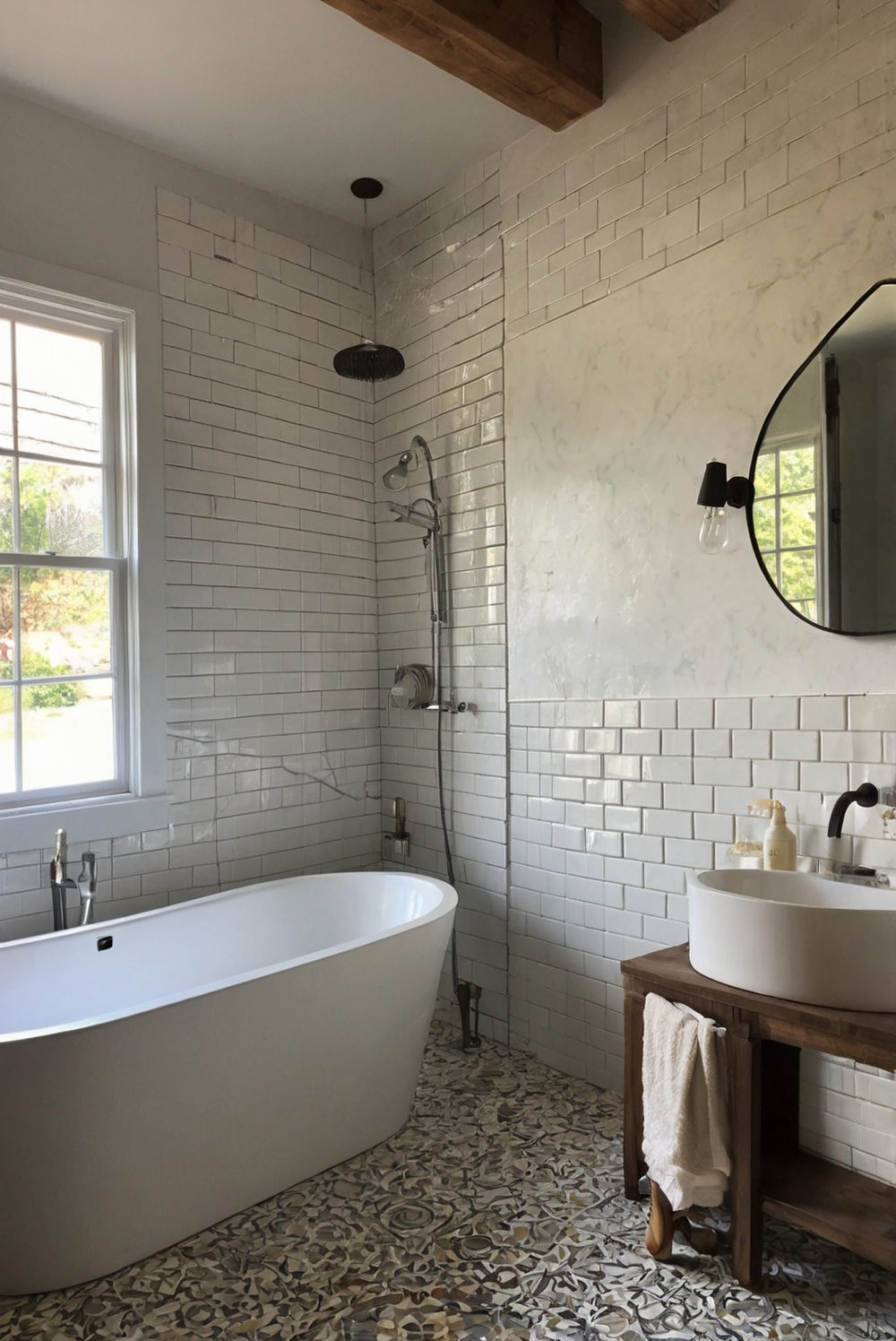Explore my daily interior designer routine for ensuring tile compatibility in your bathroom. Get expert tips on selecting materials that harmonize flawlessly.
**How do I ensure that my chosen tiles are compatible with other materials in my bathroom?**
To ensure compatibility between your chosen tiles and other materials in your bathroom, it’s crucial to consider both aesthetic appeal and practicality. Start by selecting a color palette that complements the existing elements in the space. For example, if you have a neutral wall paint, opt for tiles that either match or contrast harmoniously with it. Additionally, pay attention to the texture and finish of the tiles to ensure they align with the overall style of the room.
In terms of practicality, consider the maintenance requirements of the materials. High-maintenance tiles may not be suitable for a bathroom with heavy traffic. Also, ensure that the tiles you choose are suitable for wet areas to prevent water damage. Finally, consult with a professional designer for advice on space planning and integrating different materials seamlessly.
By taking these steps, you can create a cohesive and visually appealing bathroom interior that is both functional and stylish.
How do I ensure that my chosen tiles are compatible with other materials in my bathroom?
When selecting tiles for your bathroom, it is crucial to ensure that they are compatible with other materials in the space. This will not only enhance the aesthetic appeal of your bathroom but also prevent any potential issues in the future. Here are some key points to consider:
Consider the Color Scheme:
The color scheme of your tiles should complement the other materials in the bathroom, such as the vanity, countertops, and fixtures. It is important to create a cohesive look by selecting tiles that harmonize with the existing color palette. For example, if you have a white vanity and chrome fixtures, you may want to choose tiles with gray or beige tones to create a unified look.
Choose the Right Material:
Different materials have varying properties, such as durability, water resistance, and maintenance requirements. It is essential to select tiles that are suitable for the bathroom environment. For example, porcelain and ceramic tiles are popular choices for bathrooms due to their water resistance and ease of maintenance. Natural stone tiles, such as marble or travertine, can add a luxurious touch but may require more maintenance.
Consider the Size and Layout:
The size and layout of the tiles can also impact their compatibility with other materials in the bathroom. Larger tiles can make a small bathroom appear more spacious, while smaller tiles can create a visually appealing pattern. Additionally, the layout of the tiles, such as a diagonal or herringbone pattern, can add visual interest and complement other design elements in the space.
Ensure Proper Installation:
Proper installation is key to ensuring that your chosen tiles are compatible with other materials in the bathroom. It is essential to hire a professional tile installer who has experience working with different materials and can ensure a seamless installation. The installer should also use the appropriate adhesives and grout to prevent any issues such as cracking or water damage.
Regular Maintenance:
Once the tiles are installed, regular maintenance is essential to ensure their longevity and compatibility with other materials in the bathroom. This includes cleaning the tiles regularly with a mild detergent and water, sealing natural stone tiles as needed, and addressing any issues such as loose tiles or grout. By maintaining your tiles properly, you can ensure that they continue to enhance the overall aesthetic of your bathroom.
In conclusion, selecting tiles that are compatible with other materials in your bathroom is essential for creating a cohesive and visually appealing space. By considering factors such as color scheme, material, size, layout, proper installation, and regular maintenance, you can ensure that your chosen tiles enhance the overall design of your bathroom while also providing durability and functionality.

